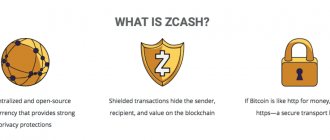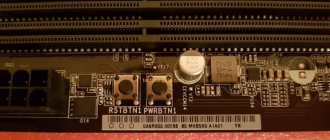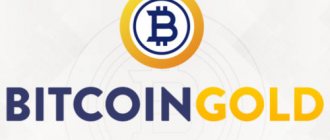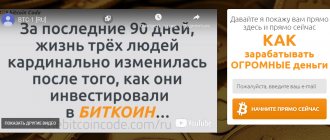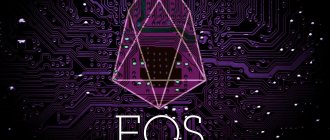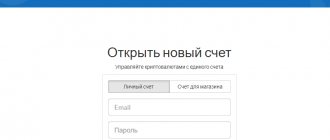Blockchain Specifications
ZCL was formed on November 5, 2020 as a result of the split of the main network into 2 chains, one of which was Zclassic. At its core, the Zcash classic blockchain is technically not much different from its parent, ZCash, with the exception of some features that will be discussed below.
The same protection method is used - Proof of Work using the Equilash .
The total emission is limited to 21 million tokens , of which 3.7 million have already been issued.
ZClassic
ZClassic (ZCL) is a fork of Zcash 1.0.1 with minimal changes except for two main points:
- The 20% remuneration to founders has been eliminated.
- Slow start has been fixed (blocks start with rewards of 12.5 ZCL per block).
Algorithm: Equihash
Rate as of 08/14/2020
- Rate:
0.269437 USD - Symbol:
ZCL - Rating (CMC):
853
Specifications ZClassic
- PoW: Equihash.
- Halving: every 4 years (same as Zcash and Bitcoin).
- Initial block reward: 12.5 coins every 2.5 minutes.
- Total final supply: 21,000,000 (21 million), according to Bitcoin (unchanged relative to Zcash).
- Difficulty recalculation algorithm: Digishield V3 (not changed relative to Zcash).
- Difficulty recalculation: every block (not changed relative to Zcash).
- Symbol: ZCL (pronounced "ZICKLE" similar to "NICKEL")
Trusted Zclassic parameters
Zcash (and Zclassic) relies on the belief that the private key has been destroyed. If someone owns the private key, they can mint an unlimited number of coins for themselves. Zcash created a procedure in which 6 individuals each created a fragment of a private key and destroyed it. Until all 6 persons agree to share their fragments, the private key is considered destroyed.
Zero-knowledge proof scheme is an open-source, decentralized technology that provides privacy and selective transparency to transactions.
Zclassic is a fork of Zcash: (@HeyRhett) decided to take a different course by eliminating the 20% commission. Miners simply earn their fair reward, and the development of the coin can be supported by the community. ZCL also differs from ZEC in the absence of a slow start; it will not be possible to deliberately provoke a shortage: the price is determined by the market.
Mining Zclassic
Slow start mining offers users and third party developers time to experiment on their own, limiting any gold rush effect that might otherwise occur. Users interested in mining can look forward to the launch of Sprout as a good time to test their mining capabilities, especially against other Proof-of-Work mining algorithms.
One of the great things about starting a new blockchain is the ability to experiment with alternative measures of decentralization through other consensus models. One of the reasons the team chose Equihash is that it has ASIC resistance, which in theory makes the network more accessible to “small” miners, which are extremely valuable in providing market balance with other miners with significantly greater capabilities.
Although the long-term effect of ASIC resistance is, at least at this stage, unpredictable, the more people participate in mining, the more secure the network will be against any inconsistency and centralization of mining power in the future.
Previous Proof-of-Work blockchains have demonstrated a mining ecosystem where it is easier to contribute to computing power in the early stages. This may be quite true for Zcash as well.
Features of the ZClassic cryptocurrency
A key feature of the project is increased anonymity when using the blockchain network. The use of cryptographic methods actually turns the network into a secure communication channel with zero knowledge.
The use of Inter-Planetary File System technology allows you to transfer various documents directly on the blockchain. Also a pleasant nuance is the absence of commissions to the creators of the project. Thus, all rewards for the block mined during mining are received by users. In addition to all this, the developers have removed the artificially set limit on the speed of block mining, which increases the difficulty of mining.
We can say that ZCL carries all the advantages of Zсash, but at the same time is devoid of its main disadvantages.
Hardfork ZCL and Bitcoin Private
On February 28, 2020, at 5 p.m. global time, a planned hard fork took place in the Bitcoin and zclassic networks, called Bitcoin Private, supporting the zk-SNARK zero-knowledge proof protocol. To the surprise of many users, at this moment the ZCL rate dropped by 60% . At the same time, Zclassic holders who stored their tokens in their wallet were awarded new tokens at a rate of 1 to 1. And the total volume of emission of the new cryptocurrency amounted to the total volume of BTC+ZCL emissions.
At the same time, the Bittrex exchange announced a couple of days later that it does not plan to list a new cryptocurrency.
Hard fork Bitcoin Private brought down the ZClassic rate by more than 10 times
The Bitcoin Private fork that took place on February 28 brought down the ZClassic (ZCL) rate by more than 10 times. The rapid fall of the ZClassic cryptocurrency shocked many crypto investors.
Back on February 20, the ZClassic rate was about $200, and on February 28 in the middle of the day it exceeded $120. In the evening of the same day, in just a few hours, the value of the coin fell sharply by 80%, to $20 - and on February 2 it dropped below $10. This happened after the fork of the chain, as a result of which Bitcoin Private appeared - the first fork of Bitcoin based on two blockchains at once: Bitcoin and ZClassic.
According to many experts, the price of ZClassic has been growing until now as a result of the activity of speculators who “pumped” the coin for its subsequent profitable sale. Immediately after the hard fork, they sold their savings to ZClassic, which led to an immediate depreciation of the altcoin. Thus, ZClassic became a shining example of the use of the “pump & dump” scheme.
But not everything is so simple - a third party intervened. It became the Bittrex exchange, which is now accused of destroying ZClassic. The management of the site refused to support the Bitcoin Private fork, as reported on the support page. The radical actions were explained by a large number of critical errors in the ZCL wallet. Why they were not paid attention to before is unknown.
ZClassic ended up becoming yet another useless anonymous altcoin that doesn’t have a clear roadmap and also can’t boast of much developer activity. Now, while the cryptocurrency rate continues to decline, some enthusiasts are trying to convince the community that Monero or at least Zcash laurels await ZClassic. However, it is possible that the coin developers will organize another hard fork in order to stimulate another wave of interest from users.
As for Bitcoin Private, at the moment only a snapshot of the cryptocurrency blockchain has been taken for the subsequent distribution of BTCP. The mainnet launch is expected to take place on Friday, March 2nd.
As a result of the hard fork, all ZClassic holders received a new cryptocurrency in a 1:1 ratio. Bitcoin Private (BTCP) intend to support the Coinomi electronic wallet, the HitBTC and TradeSatoshi exchanges, and even representatives of the Bittrex crypto exchange, which refused to support the next Bitcoin fork, said that their clients will also be able to receive BTCP. Detailed instructions for obtaining a new cryptocurrency were published on the Twitter account of the Bitcoin Private development team.
The most convenient way to trade stocks is FxPro, where traders have access to more than 140 of the most liquid securities.
FxTeam Analytics on Telegram – read news and analytics first!
Where to buy ZCL
Today, Zclassic can be bought, sold and withdrawn on five cryptocurrency exchanges.
- Bittrex. The largest trading volume for the cryptocurrency of the zcl project, which reaches 750 thousand dollars per day, falls on this exchange. Buying and selling ZCL is carried out using BTC.
- Cryptopia. Cryptopia is the second most popular exchange with a trading volume of 50 thousand USD. Bidding is for Bitcoin and Litecoin.
- Vebitcoin. The only exchange that trades classics for fiat money is the Turkish lira. At the same time, there is a significant trading volume of about $40 thousand per day.
- CoinExchange. It has the lowest price for a coin - $5.53 per piece.
- Trade Satoshi. Here, in addition to Bitcoin and Litecoin, the coin is also traded for the digital dollar and Doge.
Where can I buy ZCL coins?
Zclassic cryptocurrency trading is supported by 3 exchanges
- Hotbit;
- FinexBox;
- DOBI Exchange;
ZCL is exchanged for Bitcoin or USDT. The FinexBox exchange is the leader in the number of completed zcl transactions. More complete information can be found at https://coinmarketcap.com/ru/currencies/zclassic/markets/reported/.
On topic... Bitcoin Cash forecast and analytics for July 24, 2020
Mining ZCL
Mining of the ZCL cryptocurrency can be done both using a processor and on video cards. One of the best is the CUDA EquiHash miner, which works with Nvidia and is supported by Windows and Linux operating systems. But you can use any other miner that supports Zcash mining. For video cards from the AMD manufacturer, you can use Claymore's ZCash AMD GPU Miner. But keep in mind that this software is paid with a 2.5% commission to its developers.
In order to mine on a processor, we can recommend using Nicehash.
To start mining you need to follow these steps:
- Register on a cryptocurrency exchange
- Get a wallet
- Select the appropriate pool for mining.
- Download miner.
- Configure the program for the selected pool.
The choice of miner for ZCL is quite wide, again due to its relationship with Zcash, so everyone can make a choice to their taste and based on their specific mining needs. Within the scope of our article, we will not describe the setup of each specific miner. If necessary, finding instructions for such setup on the Internet is not difficult.
It should also be noted that due to the specificity of the coin and low profitability, ZCL mining is not very popular, giving preference to other currencies.
Development team
The ZCL blockchain was launched on November 6, 2020, without a mainline or a loud advertising campaign. by anonymous developer Rhett Creighton. The programmer just removed 22 lines in the Zcash source code and released a fork to see what happened.
On topic... Romania on the path to blockchain and crypto regulation
This is confirmed by the fact that the founder did not save a single coin for himself, although he worked full time, being both the main developer and director of the project. Nothing is known about the rest of the team either. The source code of the project is posted on GitHab, and anyone can work on improving it.
Mining pools ZClassic
Since Zclassic uses the same mining algorithm as its older brother Equihash, you can use the same pools as when mining Zcash. The project website https://zclassic.org/ contains data about 8 officially supported pools. These include:
- https://zcl.suprnova.cc/ is the most common pool for zcl, where more than 13.5 thousand users mine.
- https://www2.coinmine.pl/zcl/ - Canadian pool for zclassic with the number of clients about 2 thousand people.
- https://pool.mn/zclassic/ - a pool located in Germany.
- https://pool.cryptobroker.io/
- https://zclassic.miningspeed.com/
- https://zclmine.pro/
- https://minez.zone/
- https://pool.cryptobroker.io/
